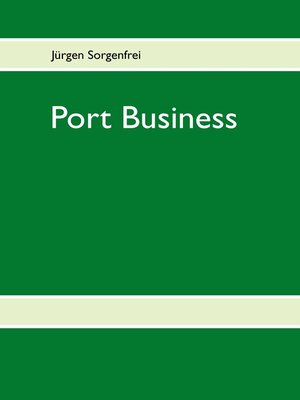
Sign up to save your library
With an OverDrive account, you can save your favorite libraries for at-a-glance information about availability. Find out more about OverDrive accounts.
Find this title in Libby, the library reading app by OverDrive.



Search for a digital library with this title
Title found at these libraries:
| Loading... |
The book "Port Business" is written for everybody with interests in trade and transportation and the role ports take in global supply chain. It shall explain what ports are, which role they can play and what the restrictions are, how they are managed, what drives the business and which trends influence them. The world economy has globalized at a tremendous pace over the past 30 years, exporting over a quarter of its merchandise output in 2010, up from 17% in 1980. It is estimated that world seaborne trade by volume amounts to 77 per cent of total world trade. In 2010, total of 7.9 bn tonnes were handled by ports and transported by sea all over the World. Already in history, port locations have been selected to optimize access to land and navigable water, for commercial or military demand, and for shelter from wind and waves. Today, in times of raising vessel sizes, ports struggle with deeper water and the pressure to be more and more efficient at lower costs. Specialization and activities in selected market niches are often the reality of medium sizes ports. The very few so called Mega-Ports have to offer the whole range of activities, and it is expected that the ports are specialists for all kind of goods that are traded around the world.
Commercial databases list more than 11,000 ports and terminals around the world, and port business becomes more complex. It is the intention of this book to put the port business into the right perspective and provide insight. For this purpose the first chapter looks back into history; chapter two then provides a status quo of ports today. Part two with chapters three to six concentrates on the supply chain view and provides trade and transportation background information, explains the role ports play along the transportation chain and focuses finally on the cargoes that are transported and the problems that may occur in cargo measurement. Chapter six finally subsumes the driver of port business. Part three explains basic port management models, discussed trends and analyzed the fundamentals of port governance and port operations. Chapter 11 as last section in part three discussed the role of port lobbying. The explanations of port business ended in part four with a discussion of mega trends that already or may in future impact port business.






